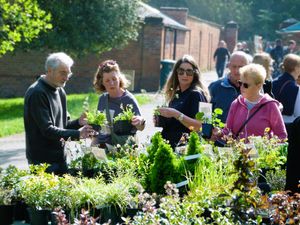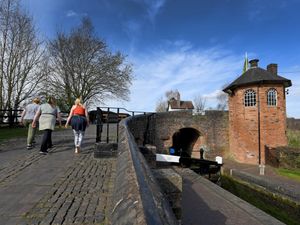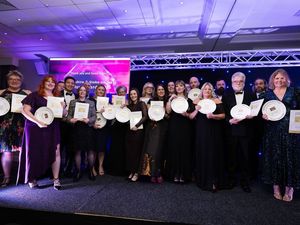Forging history: Black Country Living Museum celebrates 40th anniversary - pictures and video
Famed for its gas-lit cobbled streets and costumed characters it’s been telling the proud and distinctive story of the Black Country for 40 years.
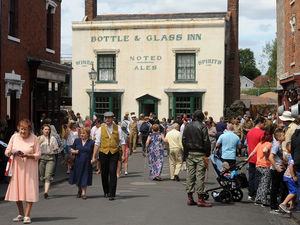
Every year hundreds of thousands of visitors step back in history as they walk through the gates of the Black Country Living Museum.
They can experience the sounds and smells of the industrial revolution first-hand to learn how the area played a crucial role in the creation of the world we recognise today.
WATCH: Landmark anniversary for museum
They can wander through the canalside village visiting the houses and shops, take a ride on the tramway, go underground in the mines and sample the museum’s famous traditional fish and chips.
This year marks 40 years since the museum first opened to visitors but the idea of an attraction dedicated to the Black Country was first mooted in 1950.
Then in 1966 Dudley Council set up a ‘Black Country Museum’ section within its museum department.
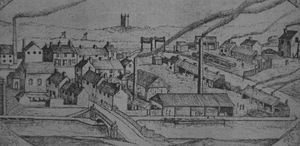
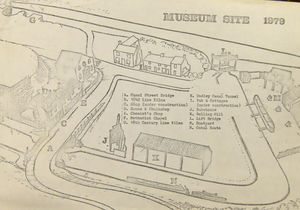
As the collection of items continued to grow so did public interest in having an attraction to showcase the area’s heritage.
A proposal was put forward for an open-air museum where artefacts could be displayed in their true context.
The Friends of The Black Country Living Museum group was founded in 1970 to help get the plans off the ground.
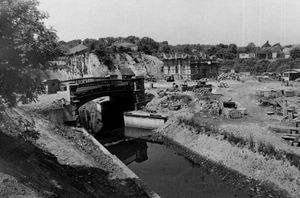

Then six years later a team of six members of staff was tasked with transforming a derelict piece of land with many old mine shafts and a water treatment works into a viable visitor attraction.
Work got under way and by May 1978 it was possible to hold a preview season to show how the museum might develop.
It ran for just under five months and during that time 8,000 people visited to see the two bridges, a boat dock and a few boats, a bakehouse, an odd-work shop, a blacksmith’s shop, the rolling mill and the construction of the chapel, the anchor maker’s house and the chemist. There were also temporary exhibitions on mining, steam engines and a mock-up of a pub interior.

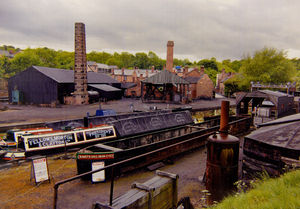
The museum continued to grow with the completion of the rest of the village and in 1980 the tramway system was installed to transport visitors the half mile or so to the canal arm.
By 1985 visitor numbers had grown to 250,000 a year and in 1990 the underground mining display opened.
Another big milestone came in 2010 with the launch of the £10 million development of the 1930s high street, Old Birmingham Road.
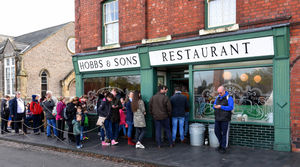
Now it welcomes more than 350,000 visitors a year and staff are celebrating the attraction’s 40th anniversary.
But they are also excited about the future with the £23m Forging Ahead development, which will expand the site by up to a third and create 450 jobs.
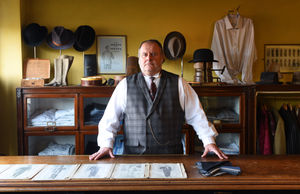

Taking place over the next four years, it will include the construction of a new 1940s to 60s town and visitor welcome centre.
Among those eagerly watching the progress of the project is Selwyn Owens, who was in charge of bringing history to life during almost three decades as the museum’s construction manager.
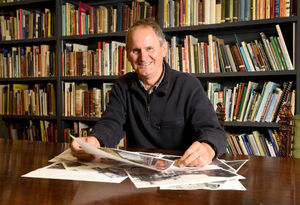
“Every building has a place in my heart,” says the 67-year-old who joined what was still a fledgling museum in 1987 and went on to mastermind many of the attraction’s most famous construction jobs.
This includes the entire 1930s-style Birmingham Road, which is one of the museum’s two main streets,the reconstruction of Cradley Heath’s Worker’s Institute, the Victorian St James’ School, which was originally in Salop Street, the Limelight cinema from Brierley Hill and the traditional sweet shop.
“It was very challenging. Having to take down a shop brick by brick, then making sure it’s stored correctly and logged correctly before it’s rebuilt again involves a lot of work but at the end of each project there is tremendous job satisfaction,” says Selwyn, who retired almost three years ago.
“It’s very personal and when I see people enjoying the buildings and hear about the story of the Black Country I feel very proud.”
The sweet shop holds a special place in his heart and for him demonstrates why the museum is held in such high regard by visitors.
It takes the name of Thomas Cook, who ran a small confectionary business at 21 Bond Street, Dudley between 1871 and 1901, but a building in Oldbury was used to help recreate it.
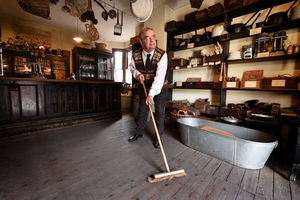
“The original front of the shop wasn’t there but we had a black and white photo of the shop with a man, woman and little girl standing outside. One of my tasks was to take that photo and work out the design and materials we were going to use to recreate it. The child in the photo, who by this time was in her late 80s was invited to open it when we had finished.
“When she saw the shop she broke down in tears – and I wasn’t far behind her. We had managed to recreate something she remembered so well and that’s one of the reasons that makes the museum special,” says Selwyn, who lives in Dudley.
He is still involved in museum life and says he’s looking forward to seeing the Forging Ahead development take shape over the coming years, and adds: “It’s a very ambitious project but it’s what the museum needs to move forward.”
Since it was formed almost 50 years ago, the Friends of the Black Country Living Museum has continued to support the attraction by fundraising and helping to spread word of its work far and wide.
Volunteer David Baker joined the group, which is also responsible for the running and upkeep of Pitts Cottage, in 1980 and looks after Darby Hand Providence Chapel, organising a range of services throughout the year.
“I was born between Old Hill and Cradley Heath so I’m a Black Country lad and the museum is very important to me. It was something I knew I wanted to get involved in,” says the 76-year-old, who gives talks on the museum’s history and development.
“The Friends group has always been there to provide support and knowledge and we feel we’re part of the museum’s success story.”
One of the longest serving members of staff is mine manager Ann Stringer, who has worked at the museum since 1989.

It was the same year the underground attraction, which shows how miners worked the Staffordshire Thick Coal and other seams in the Black Country in about 1850, opened to much anticipation.
“The first year the mine opened we had hundreds visit each day and they would queue up, they were so excited to see what the mine was like. There was a real buzz and it’s still popular today,” says the 52-year-old from Old Hill.
For the past 20 years, visitors to the museum will have been welcomed by Kay Reynolds.
Her first day was for the opening of the Rolfe Street Baths admissions building, which she said is a nice connection to her own past as the 70-year-old used to swim in the same building as a child. Even to this day, each morning she arrives to work, it brings a smile to her face.
“Who would of thought all those years ago as a little girl swimming, that I would be working where the baths used to be,” she says.
After seeing the museum go through many developments over the years, Kay, who lives in Dudley, says it’s exciting it is to be part of Forging Ahead.
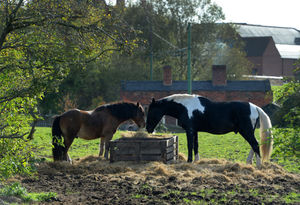
As part of her role she’s been passing on her years of experience to new generations starting in similar roles. This has included working alongside 23-year-old Kavita Paul, who is part of the sales and ticketing team.
“I never want to retire, I love the museum and would miss the people. I could have retired 11 years ago but the museum has given me the opportunity to continue to share my knowledge and experience,” says Kay.
Her protégé Kavita, who lives in Penn, said: “Kay has been a good teacher, she is the perfect person for the reception. She has so much knowledge about the museum.”
Kavita is also part of the Forging Ahead project sharing her first-hand experience to help with making the developments as accessible to people in wheelchairs as possible.
“I’m very excited about Forging Ahead as I think it will bring a lot more people to the museum,” says Kavita.
One of the reasons the museum leaves a lasting impression on visitors is its costumed demonstrators. Every day they help to bring history to life in the buildings, houses and shops around the 26-acre site. Sarah Bradbury, 39, who lives in Newport, has been one of the team since March and can be found ready to chat to people in the ‘back-to-back’ cottages.
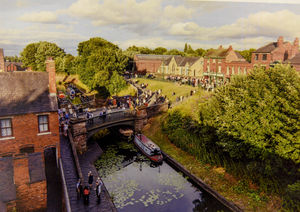
“I love it because it’s a chance for people to see, feel and smell history. I’ve always had a passion for history and it’s great to being it to life for people,” says Sarah.
The museum has welcomed a number of new staff in recent months including Chantelle Slowly, who works in community engagement.
As part of Forging Ahead, a number of buildings will be moved to the site or recreated and 26-year-old Chantelle has been collecting people’s memories.
She’s particularly excited about the planned replica of Wolverhampton’s Lea Road Infant Welfare Centre, which will be used to the story of the formation of the NHS, the relocation of Dudley’s Woodside Library to the museum.
“These were such an important part of the community so I think a lot of people are going to be interested in these,” adds Chantelle, who lives in Tipton.
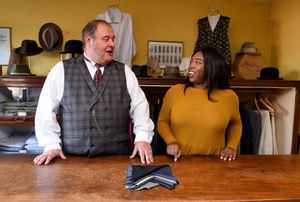
The museum is supported by an army of around 50 volunteers including 29-year-old University of Birmingham archaeology student Harrison Davis.
He works behind the scenes on costumes in the sewing room and also greets visitors to the ‘back-to-back cottages.
“I’ve always wanted to work here since I first visited when I was little,” says Harrison, who lives in Halesowen. “I love it when people come into the house and start talking to me about their memories and sharing their stories.”
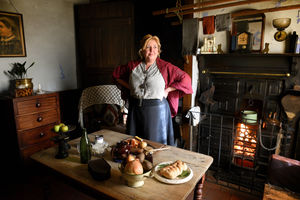
The youngest member of staff at the museum is 17-year-old Ben Careless who started as a human resources apprenticeship in June.
“The museum is continuing growing and it’s going to develop further with Forging Ahead. I love walking around the site and see the view of the village. It’s a great place to work,” he says.

